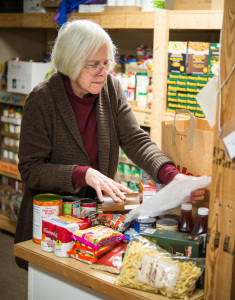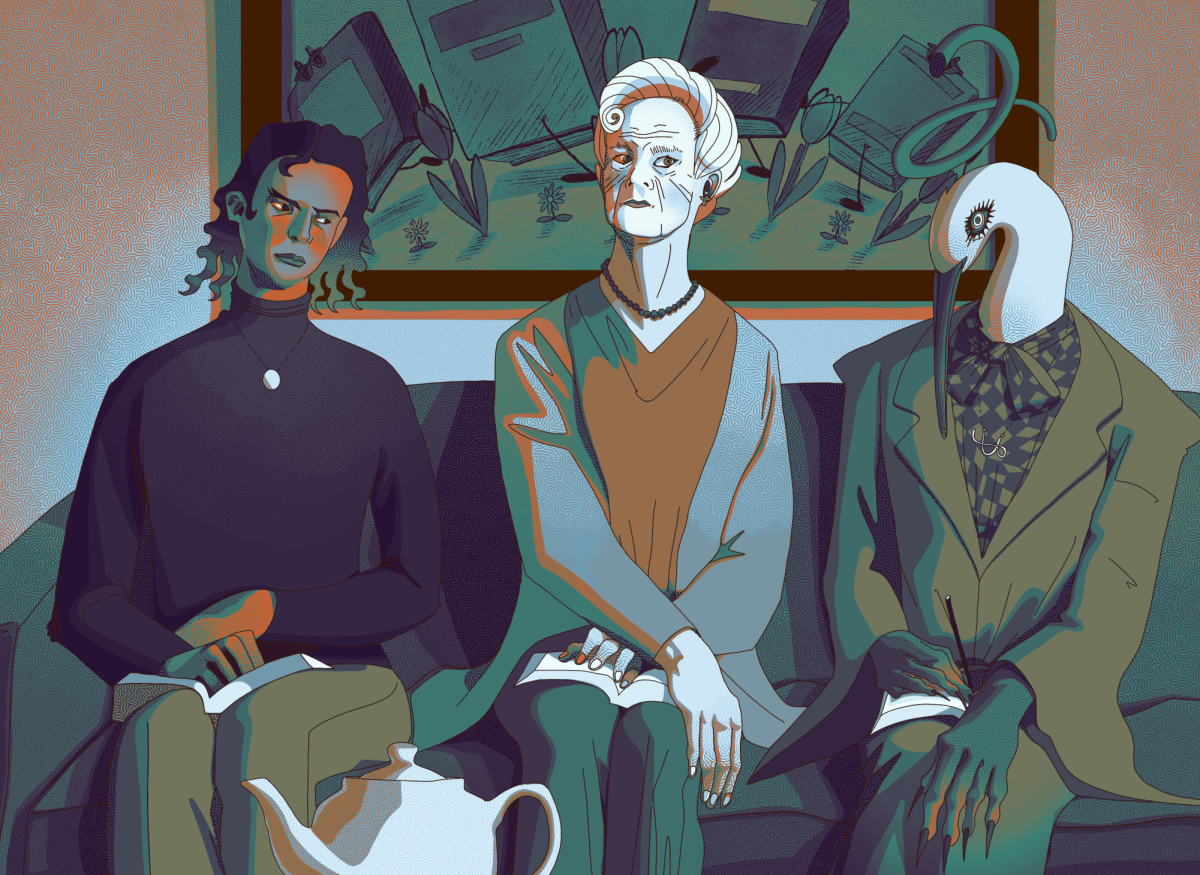
One in six Iowans are food insecure. According to Northeast Iowa Food Bank, it is estimated that over 2,300 individuals are food insecure in Poweshiek County. In light of the holiday season, many community members will remember to donate to the local food pantry, generously donating a meal to a household in need. But Grinnellians might not be aware of the prevalent yearlong hunger problem in Grinnell and Poweshiek County and the local organizations that try to alleviate this issue.
According to Seth Howard ’14, the 2014 Grinnell Corp Fellow at the poverty-fighting organization Mid-Iowa Community Action (MICA), Grinnell College students may not be conscious of the food insecurity problems facing the greater Grinnell community.
“I think as Grinnellians, we think our community is well off. We see from Broad St. to like East St. Really, Poweshiek struggles with food security. I know in the recent month, we served 247 families through our food pantry in one month. In the first day of November … we had 44 families,” Howard said.
Noting that many families may be too proud to seek out help, or lack the transportation to visit the local food pantries, Howard believes that the actual number of families who can benefit from food pantry help is more.
Pastor Kirsten Klepfer of Grinnell’s First Presbyterian Church, whose church hosts monthly food drives for MICA in Grinnell, echoes this concern. “I know a number of people that we serve and I see them over and over and over again which is good, but I wonder who’s not here,” she said.
She noted that a possible venue for individuals feeling stigmatized about going to food pantries is the weekly Community Meal every Tuesday at Davis Elementary School.
“I go there every week. Lots of people go there, not just people who are poor. It’s much easier to walk in and be a part of that rather than think that you’re given a handout they are not,” she said.
However, it’s tough to balance out the quantity of food donations with the numbers of families who come into the food pantry, especially during the holiday season. Donors from the community often forget to donate to food drives outside of the holiday season, making the distribution of donations very uneven.
“We love receiving and we are super grateful for every donation we receive, although in the winter months, November through January, we receive such a large influx … because they think it’s cold and families are really hungry at this time of the year. At times that becomes a burden to us, we have limited space and limited time between staff and volunteers. In other months, I think during July and August, we were really short on things,” Howard explained.
Howard suggested that community food drives could collaborate to ensure that there isn’t a large grouping of food donations during the winter months. Additionally, local food drives could arrange fundraisers that aren’t food-based.
“We can stretch a dollar a long way at the food bank. Monetary donations actually allow us to stretch our money farther and allows us to … purchase at times when we’re super low on something,” Howard said.
There are many campus-led efforts to help alleviate food insecurity or improve the efficiency of the existing efforts.
Last year, Dylan Bondy ’16 founded a Grinnell chapter of the Food Recovery Network (FRN), a non-profit that fights against food waste and hunger. Food Recovery collects non-perishable items from the College Dining Hall or other local food stores and redistributes them to families and individuals in need.
Bondy, similar to Howard, noted that their food distribution efforts were less effective at certain parts of the year, especially during sessions when students are not in class.
“We have influx year round, but there is less food during the summer for us, so we have an inverse challenge. Summers and breaks are difficult. Fortunately church volunteers help run the program during breaks and the summer with food collected from Pizza Ranch, Hy-Vee, Grinnell Regional Medical Center and all those community partners,” Bondy said.
Professor Janet Davis, Computer Science, Lea Marolt Sonnenschein ’15, Jordan Yuan ’15, John Brady ’16 and Victoria Tsou ’16 are currently working on a program as part of Davis’s Team Software Development for Community Organizations class that, according to Howard, will allow “donors to see what items are most needed,” helping to reduce MICA’s overstocking burden.
“This website seemed like a way we could help that could be easily reached by the community. Furthermore, the food pantry sometimes needs certain foods and items more than others, so our website can assist with communication in showing the community what is most needed. This information wasn’t available before, so this is a way we’re improving it,” Tsou and Brady wrote in an email to The S&B.
Grinnell’s relationship with food insecurity can be also be observed through its percentage of students on free or reduced school lunches (based on income eligibility guidelines from the United States Department of Agriculture). Thirty-eight percent of students enrolled in the Grinnell-Newburg school district quality for free or reduced meals.
Fortunately there is the community-led Tiger Packs program, which addresses the issue of hunger and food insecurity among Grinnell-Newburg students. Tiger Packs provides bags of kid-friendly, nutritious food for in-need students to take home on the weekends. The program currently does not address the 31 percent of free and reduced lunch students at Grinnell High School, but its organizers have plans to soon expand their program.
Delphina Baumann, the Community Relations Coordinator for the Greater Poweshiek Community Foundation and member of the Tiger Packs Advisory Board explained that in-need students are identified by school teachers and staff.
“We at the Tiger Packs Advisory Board do not know who these students are, all we know is we need to package X amount of meals per month. And most of the time it’s because a teacher will notice a kid, especially on Mondays when they come to school, and they’re hungry, they’re scarfing down the free breakfast at the school,” Baumann said.
MICA donor, Professor Caleb Elfenbein, History and Religious Studies, gave some perspective on how Grinnellians can balance out their priorities and commitment to food security efforts in Grinnell.
“For me it’s a question of working with MICA and making sure that I’m doing what is most helpful for them. I feel like the best donors are those who actually take a second to ask MCIA what is most helpful. … I have my own priorities that I try and balance with MICA’s needs. One big priority for me is making sure that I’ve brought in food that will provide a couple of meals to a family that is low in sugar as possible. A lot [of] inexpensive foods that make up the bulk of donations to MICA and make up the bulk of purchases often have really high sugar,” Elfenbein said.
Though Grinnell is fortunate to have so many venues of help in alleviating food hunger in the community, Howard encourages individuals to partake in the community’s efforts, whether it’s through food donations, monetary donations or volunteer time.
“I would let family and community members know that hunger is not a seasonal phenomenon,” Howard noted.
Ed. Note: John Brady ’16 is the Photo Editor of the S&B.





























































